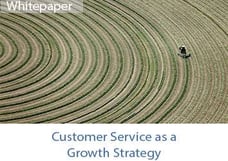Multi-Channel Support Options B2B Companies Should Offer
B2B (business-to-business) customers are becoming more demanding. After experiencing some of the more modern support methods in their everyday B2C (business-to-consumer) lives, they are increasingly expecting B2B companies to keep up.
However, there is no one right answer for which channels a B2B company should offer for multi-channel customer support. Below are the core customer support channels for the B2B industry, alongside specific reasons why companies offer them and why they choose not to.
Phone
Why offer?
Phone has been a cornerstone of many customer support teams over the past decades. As a result, most B2B companies are expected to offer some form of phone support. It’s a great method for getting to the root of the problem or concern quickly.
Why avoid?
In rare situations, some companies avoid phone support because it’s expensive for working with routine problems. A server company that doesn’t want their high-priced tech employees stuck on the phone with reset requests may only offer online channels.
Why offer?
Right after phone, email is the next oldest form of support. It’s essentially a more modern version of the old "snail mail" customer support but with instantaneous responses. This channel will always have its place in the business world.
Why avoid?
Some companies do not like the “freestyle” approach of email because it can take a long time for an agent to read. Instead, they prefer to initially push customers to pre-populated choices to determine if email is the right channel for their issue.
Online Form
Why offer?
In the modern digital age, online forms are everywhere. B2B customers are used to interacting with them, and they provide a structured way to obtain information through choice selection that isn’t available over email or phone.
Why avoid?
One of the major concerns with online forms is that they can have issues if the code is not read correctly by the customer’s web browser. The form may not load, or even worse, a customer may fill out the entire form only to find out they are unable to submit it.
 |
Want to learn other ways to grow your customer support besides adding channels? Download our whitepaper focused on customer service as a growth strategy to find out!
|
Live chat
Why offer?
Live chat is a blend of phone and email support. Essentially a customer is communicating directly with an agent in real-time but typing their issue instead of explaining it with spoken words. It’s ideal for customers who can’t talk but need quick fixes.
Why avoid?
Live chat can run into the same issue as online forms with it not working properly for everyone (depending on their web browser). It may also take a unique type of agent that is fast at both knowledge retrieval and typing to be successful with live chat.
Self service
Why offer?
Unlike several of the other support channels, self-service is unique because it’s “always available” as an online resource. There are no hold times or set hours. It’s great for enabling customers to educate themselves and for reducing ticket volume.
Why avoid?
Good self-service content takes time to create and requires monitoring and updating to be fully effective. Customers can also become more confused trying to fix a complex problem via self-service when it likely requires a different channel (and a support agent) to solve.
Visual Support
Why offer?
This method, which includes providing support via screen share or video call, is a great way to visually see what is wrong with a product or technology. What could take hours to describe over email or chat can be shown in minutes with visual support.
Why avoid?
Visual support can require additional hardware (i.e. web cam) to work and some customers may be uncomfortable installing screen share technology. It also means agents must work in a professional environment that is clear of any distractions.
At the end of the day, with so many support channels available it’s up to businesses to decide which channels are right for both themselves and their customers. In addition, it’s important to choose a support software solution that has every channel you want so there’s no need to navigate complex integrations. In general, the more ways your customers can learn from and communicate with your business the better!






